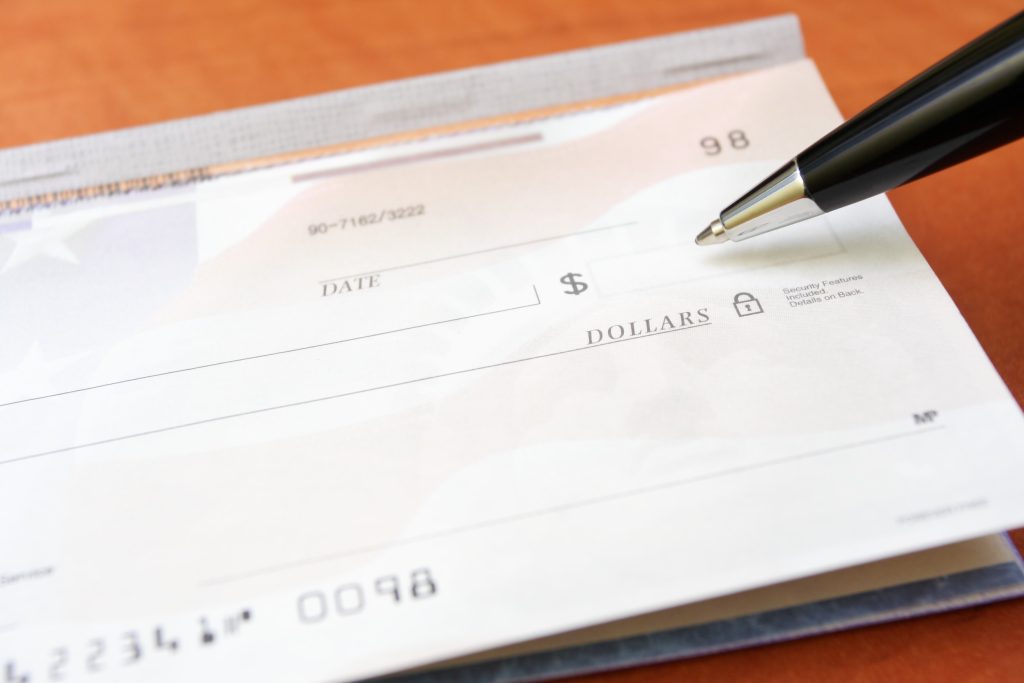Technology has made a lot of things easier. You have tools that help you keep your schedule straight. There are apps that will help you lose weight and others that will assist you with time management. These bits of technology have also replaced some old-school financial tools. Here are nine such tools and what they were eventually replaced by.
1. Checkbooks
Once a household essential, checkbooks were used to pay bills, send money, and track spending. Writing checks and balancing a checkbook ledger required patience and precision. Over time, checks became inconvenient as faster payment methods emerged. Today, online banking and mobile payment apps like Zelle, Venmo, and PayPal have eliminated the need for paper checks. With just a few taps, people can transfer money instantly without waiting for a check to clear. Even rent payments, once dominated by checks, have largely moved to digital platforms.
2. Paper Bank Statements
There was a time when checking your account balance meant waiting for a monthly paper statement to arrive in the mail. Banks printed and mailed these statements, which listed every transaction made that month. If you needed an update before then, you had to visit a branch or call customer service. Now, digital banking allows users to check their account balances and transactions in real time. E-statements have replaced paper versions, saving both time and trees. Push notifications now alert users to transactions instantly, offering more financial control than ever before.
3. Physical Paychecks
Getting paid used to mean receiving a physical paycheck and taking a trip to the bank to deposit it. Some companies even handed out paper checks on payday, creating long lines at banks on Fridays. Direct deposit changed the game by transferring salaries directly into employees’ bank accounts. Payroll apps like ADP and Gusto have taken this a step further, offering employees access to their pay stubs, tax forms, and even early wage access. Not only is this faster and more secure, but it also eliminates the risk of losing a paper paycheck.
4. Savings Bonds
Many families once gifted paper U.S. savings bonds to children as a long-term financial investment. These bonds matured over decades, offering a safe way to save money. However, with the rise of digital banking, paper savings bonds were phased out in favor of electronic versions. Rather than using savings bonds, many people have high-yield savings accounts and investment apps like Robinhood. These financial tools offer better returns and more flexibility.
5. Budgeting Envelopes
The envelope system was once a popular way to manage household budgets. People would withdraw cash, divide it into envelopes for different expenses, and spend only what was in each envelope. While effective, this method became impractical as cash transactions declined. Now, budgeting apps like YNAB (You Need a Budget) and QuickBooks automate the process. These apps categorize spending, track expenses in real-time, and even provide insights into saving habits.
6. Coin Jars
Many households kept a jar of loose change, slowly saving pennies, nickels, and dimes over time. Once full, the coins were rolled and deposited at the bank. With cash transactions becoming less common, coin jars have become nearly obsolete. Again, apps have taken over. Round-up savings apps like Acorns and Chime replace them by automatically rounding up purchases to the nearest dollar and investing the spare change.
7. Traveler’s Checks
Traveler’s checks were once a must-have for international travel, offering a secure way to carry money abroad. If lost or stolen, they could be replaced, making them safer than cash. However, the rise of credit cards and digital wallets like Apple Pay and Google Pay made them redundant. Now, travelers can make secure purchases anywhere in the world using chip-enabled cards and contactless payments.
8. Passbook Savings Accounts
Passbook savings accounts require customers to visit a bank branch and have a teller update their balance in a small physical booklet. This was the primary way people tracked their savings and withdrawals. With the rise of online banking, passbooks became unnecessary. Today, customers can view their account history, deposit checks via mobile apps, and transfer funds instantly from their phones.
9. Faxed Loan Applications
Applying for a loan once involved gathering paperwork, filling out forms, and faxing documents to banks or lenders. The approval process was slow, requiring days or even weeks of waiting. Online loan platforms like SoFi, LendingClub, and Rocket Mortgage have completely gotten rid of the need to fax anything in. These platforms allow borrowers to apply in minutes. Additionally, they use automated underwriting, providing instant approvals and funding in as little as 24 hours.
The Future of Finance: What’s Next?
Like everything else, financial tools are constantly evolving. Over the years, they have made managing your money more convenient and efficient. As artificial intelligence continues to expand, it will be interesting to see how money management becomes more digital in the years to come. Embracing these new financial tools will help you be more effective in managing your money.
Read More
10 Ways to Escape the Paycheck-to-Paycheck Cycle for Good
Want to Retire at 45? Here’s the Plan Most People Overlook

Drew Blankenship is a former Porsche technician who writes and develops content full-time. He lives in North Carolina, where he enjoys spending time with his wife and two children. While Drew no longer gets his hands dirty modifying Porsches, he still loves motorsport and avidly watches Formula 1.
